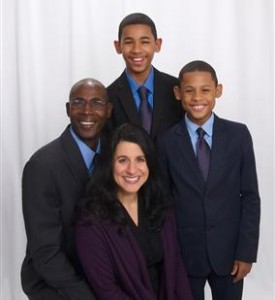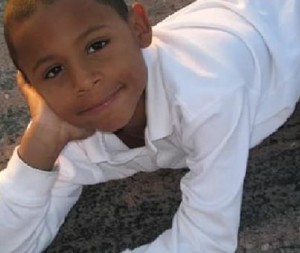 Michelle Chalmers is a therapist, writer, and mother of two bi-racial sons. She’s written a picture book, The Skin on My Chin, featuring a photo of her youngest son on the jacket. As a therapist, she facilitates conversations about race. Michelle participated in the Cambridge, Massachusetts Center for Adult Education workshop, White People Challenging Racism which was my link to her through the work of Barbara Beckwith, a co-facilitator of the workshop. I asked Michelle what specific skills she learned from the course and other questions. Her answers are rich with information.
Michelle Chalmers is a therapist, writer, and mother of two bi-racial sons. She’s written a picture book, The Skin on My Chin, featuring a photo of her youngest son on the jacket. As a therapist, she facilitates conversations about race. Michelle participated in the Cambridge, Massachusetts Center for Adult Education workshop, White People Challenging Racism which was my link to her through the work of Barbara Beckwith, a co-facilitator of the workshop. I asked Michelle what specific skills she learned from the course and other questions. Her answers are rich with information.
1) How can children’s books begin to build awareness  about race?
about race?
I wrote The Skin on My Chin, for exactly that reason. While raising my children, I could find books to engage them in conversations about using the toilet, going to school, making new friends and understanding death, but I couldn’t find a book that would help me to engage in a conversation about race.
I believe that we have to talk with children about race, racial differences, racism and social justice; from the moment we begin talking and reading to them. It has been studied and determined, that children as young as a few months old display bias and preference for things/people they like and that look like them and/or don’t look like them or who like the same things. All human beings have bias and prejudice and this fact must be understood and acknowledged, then accurately written about in the context of the world around us.
As authors, and specifically white authors, we must understand our society’s construction of race, our own white racial identity and the awareness and mindfulness of white privilege and how it manifests in children’s books and all areas of the media. This is no easy task, but it can be done and must be done, if we want to authentically and accurately build awareness about race, in children’s books. Once we understand how we are all affected by race and racism, we can begin to write books that name it, teach it and help to address it.
As a start, I recommend the following films, websites and books:
http://www.pbs.org/race/000_General/000_00-Home.htm
http://www.pbs.org/race/000_About/002_04-background-01-x.htm
White Privilege: Unpacking the Invisible Knapsack (1989), Peace and Freedom Magazine, July-August, 1989, pp. 10-12, Women’s International League for Peace and Freedom, Philadelphia, PA.
Becoming Human, http://www.becominghuman.org, The Institute of Human Origins, ArizonaStateUniversity 2001
2) Would you name some books that you recommend for children or teens that help to build awareness of race and racism or depict equality?
On my website http://www.theskinonmychin.com/learn-more.html I have several books, websites and other resources listed.
Below are two books, for young children.
Hamanaka, Sheila. All the Colors of the Earth. London: Mantra, 1996. Print
Katz, Karen. The Colors of Us. New York: Henry Holt and, 1999. Print.
Jane Elliott’s Blue Eyes Brown Eyeshttp://www.youtube.com/watch?v=uQAmdZvKf6M
3) What practical step did you learn in the “White People Challenging Racism” workshop you attended that you could pass on to readers?
The most important lesson I learned from attending the “White People Challenging Racism” workshop is to ask “why of the why.” What I mean is, when I see or learn about something or experience something that appears not right or inequitable, I ask, “Why?” Then once I understand why, I ask the question why again. Begin to look deeper into our society to find the truth. Then, do something about it. Some people doubt the work I am doing. They say, “Michelle, do you really think you can make a difference?” and I always says “YES!” I believe, just little old me and just little old you can make a difference, and it starts with being mindful.
4) What would you recommend to white writers who are creating characters who are people of color?
Engage in conversations with many people of color and then listen and believe. In order to be able to create an authentic character, as a white person, you must understand you will never know what it means to not be white. Understand this fact, listen and respect the experiences of people of color and create a character from the lens of empathy and awareness.